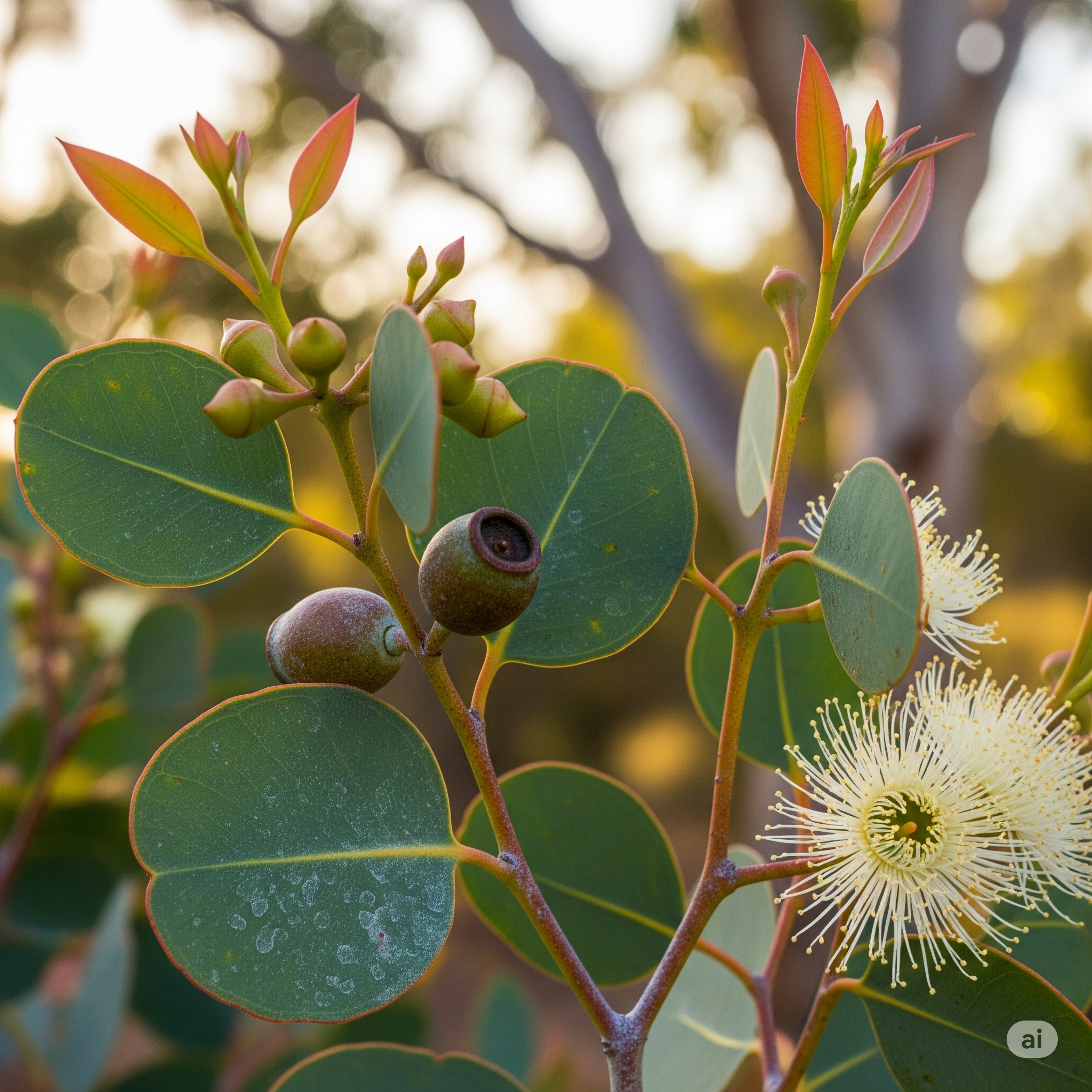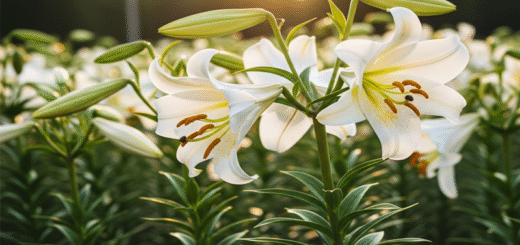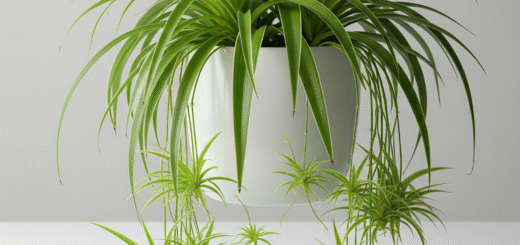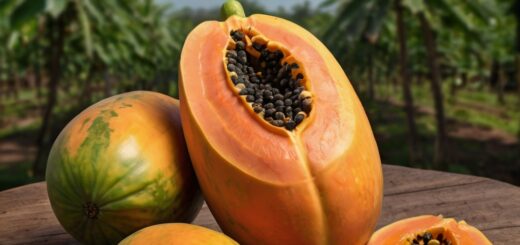The Eucalyptus plant: Cultivition, uses, Description, Family, and Facts

In the family Myrtaceae, Eucalyptus includes more than 700 species of flowering plants. Trees are the most common type of Eucalyptus, followed by mallees and shrubs. Eucalypts are commonly known as “gum trees,” along with Corymbia and Angophora, other genera within the tribe Eucalypteae. A tree in the genus Eucalyptus has smooth, fibrous, hard, or stringy bark, as well as oil glands on its leaves. In the fruit, the sepals and petals fuse together to form a “cap” or operculum over the stamens, hence its name from Greek eû (“well”) and kaluptós (“covered”).
All states and territories have Eucalyptus species that are native to Australia. There are about three quarters of Australian forests made up of eucalyptus trees. There are many species of eucalypt that have adapted to wildfires, have been able to resprout after a fire, or have seeds that are fire-resistant.
There are a few species native to islands north of Australia, and a smaller number is found only outside the continent. Many other countries plant eucalypt trees because they are fast-growing, have valuable timber, or can be used for pulpwood, honey production, or essential oils. Their high flammability has led to their removal in some countries due to their risk of forest fires.
Size and habit of the Eucalyptus
Eucalypts range in size and habit from shrubs to tall trees. Most trees have a single main stem, but many eucalypts are mallees, which have multiple stems from ground level and rarely reach more than 10 meters (33 feet) in height. While there is no clear distinction between a mallee and a shrub, in eucalypts, a shrub is a mature plant less than 1 m (3 ft 3 in) tall and found in extreme climates. In Western Australia, surgens grow on coastal cliffs and eucalyptus vernicosa grows in the Tasmanian highlands.
It is only Western Australian eucalypts that are called “mallet” and “marlock”. A mallet tree has a single thin trunk with steeply branching habit, but lacks both lignotubers and epicormic buds. An example of a mallet is Eucalyptus astringens. It is a shrub or small tree with a single, short trunk and densely leafy branches that often reach almost to the ground. It lacks a lignotuber. An example of a marlock is Eucalyptus platypus.
Eucalyptus trees, including mallets and marlocks, are single-stemmed, and Eucalyptus regnans is the tallest flowering plant on earth. It can be found in Vale de Canas in Coimbra, Portugal, where Karri Knight is Europe’s tallest tree reliably measured. There are 72.9 meters of height and 5.71 meters of girth on this Eucalyptus diversicolor.
Bark features of the Eucalyptus
Every year, eucalypts add a layer of bark, and the outermost layer dies. Approximately half of the species shed their dead bark, revealing fresh, living bark beneath. A large slab of dead bark can be shed, a ribbon of dead bark can be shed, or a small flakes of dead bark can be shed. The smooth barks include the sheathiana, diversicolor, cosmophylla, and cladocalyx species. Those species that retain dead bark dry out and accumulate over time. Stringybarks like E. macrorhyncha and peppermints like E. radiata have loosely interwoven bark fibers, while box trees like leptophleba have more densely adhered fibers. There are some species (the “ironbarks”) that have gum resin embedded in their rough bark.
The dead bark is mostly retained in the lower half of the trunks or stems of many species, such as brachycalyx, ochrophloia, and occidentalis-or only in a thick, black accumulation at the base, such as clelandii. Many species in this category, such as youngiana and viminalis, have a rough basal bark that turns ribbony at the top, where the smooth upper stems appear. Trees and mallees with smooth upper bark, such as deglupta, can produce remarkable colour and interest.
It is known that globulus bark cells are capable of photosynthesizing in the absence of foliage, conferring an “increased capacity to re-fix internal CO2 following partial defoliation”. Trees that grow in less-than-ideal climates are also better able to recover from damage caused by fires, which can damage their leaves.
Leaves and stems of the Eucalyptus
Most Eucalyptus species are evergreen, but some tropical species lose their leaves at the end of the dry season. Oil glands cover the leaves of Eucalyptus, as they do in other members of the myrtle family. One of the most important characteristics of the genus is its abundance of oils. The leaves on mature Eucalyptus trees usually hang downward, so their shade is characteristically patchy.
Leaf shapes of Eucalyptus plants include lanceolate, petiolate, alternate, waxy, or glossy green. On the other hand, seedlings are often characterized by sessile leaves that are glaucous. This pattern is, however, not universal. Melanophloia and setosa retain their juvenile leaf form even after they reach reproductive maturity. This lifelong juvenile leaf form makes some species, like macrocarpa, rhodantha, and crucis, desirable ornamentals. The leaves of some species, including petraea, dundasii, and lansdowneana, remain shiny green throughout their lives. The leaves of Eucalyptus caesia are dull, glaucous at maturity, in contrast with those of most Eucalyptus. It is useful to distinguish between juvenile and adult leaf phases in the field.
There are four leaf phases in the development of an Eucalyptus plant: seedling, juvenile, intermediate, and adult. It is important to note, however, that no clear transition occurs between phases. Between the juvenile and adult phases is the intermediate phase, when the largest leaves are formed.
Only a few species have leaves arranged in pairs, and consecutive pairs are at right angles to each other (decussate). In some narrow-leaved species, such as oleosa, the seedling leaves are often clustered in a spiral arrangement around a five-sided stem after the second leaf pair. By absorbing some of the leaf-bearing faces of the stem, the arrangement reverts to decussate after the spiral phase. For species with opposite adult foliage, the leaf pairs, which are opposite at the stem apex, become separated at their bases by unequal elongation of the stem, producing the apparently alternate adult foliage.
Flowers and fruits of the Eucalyptus
The most readily recognisable characteristics of Eucalyptus species are the distinctive flowers and fruit (capsules or “gumnuts”). Flowers have numerous fluffy stamens which may be white, cream, yellow, pink, or red; in bud, the stamens are enclosed in a cap known as an operculum which is composed of the fused sepals or petals, or both. Thus, flowers have no petals, but instead decorate themselves with the many showy stamens. As the stamens expand, the operculum is forced off, splitting away from the cup-like base of the flower; this is one of the features that unites the genus. The woody fruits or capsules are roughly cone-shaped and have valves at the end which open to release the seeds, which are waxy, rod-shaped, about 1 mm in length, and yellow-brown in colour. Most species do not flower until adult foliage starts to appear; cinerea and perriniana are notable exceptions.
Species and hybrids of the Eucalyptus
Over 700 species of Eucalyptus are known. Some have diverged from the mainstream of the genus to the extent that they are quite isolated genetically and are able to be recognised by only a few relatively invariant characteristics. Most, however, may be regarded as belonging to large or small groups of related species, which are often in geographical contact with each other and between which gene exchange still occurs. In these situations, many species appear to grade into one another, and intermediate forms are common. In other words, some species are relatively fixed genetically, as expressed in their morphology, while others have not diverged completely from their nearest relatives.
In some cases, hybrid individuals have not always been recognized as such at first collection, such as chrysantha preissiana sepulcralis and “rivalis” marginata megacarpa. The combination of hybrid species is not particularly common in the field, but some other published species frequently seen in Australia may be hybrids. Since Eucalyptus erythrandra is widely distributed, it is often referred to in texts as an angular teraptera.
Some Eucalyptus species contain renantherin, which allows chemotaxonomic differentiation between renantheroideae and renantherae, and the ratio of leucoanthocyanins varies considerably.
Related genera of the Eucalyptus
Eucalyptus is one of three similar genera that are commonly referred to as “eucalypts”, the others being Corymbia and Angophora. Many species, though by no means all, are known as gum trees because they exude copious kino from any break in the bark (e.g., scribbly gum). The generic name is derived from the Greek words ευ (eu) “well” and καλύπτω (kalýpto) “to cover”, referring to the operculum on the calyx that initially conceals the flower.
Distribution of the Eucalyptus
A very small number of Eucalyptus species are found in adjacent areas of New Guinea and Indonesia, according to Plants of the World Online. There is one species, Eucalyptus deglupta, that ranges as far north as the Philippines. Only nine of the 15 species found outside Australia are exclusive to other countries. A wide variety of Eucalyptus species are cultivated throughout the tropical and temperate world, including the Americas, Europe, Africa, the Mediterranean Basin, the Middle East, China, and India. Cold tolerance limits the range of eucalypts that can be planted in the temperate zone.
A total of 92,000,000 hectares (230,000,000 acres) of native forest in Australia are covered by eucalyptus trees. Its name refers to the blue haze prevalent in the area, which originates from the volatile terpenoids emitted by the trees in the Blue Mountains of southeastern Australia.
Fossil record of the Eucalyptus
Eucalyptus fossils are oldest in Patagonia, South America, where the tree is no longer native, but has been introduced from Australia. Fossils from the Laguna del Hunco Formation in Chubut Province, Argentina, date back to the early Eocene (51.9 Mya). This indicates a Gondwanan distribution for the genus. In New Zealand, where the genus is not native today, but has been introduced from Australia, fossil leaves were also found during the Miocene.
Although Eucalyptus dominates modern Australian vegetation, contributing some 75%, the fossil record indicates that its dominance is geologically more recent. A 21-million-year-old tree stump encased in basalt in the upper Lachlan Valley in New South Wales is the oldest macrofossil of Eucalyptus. Several other fossils have also been found, but they are either unreliable dated or unreliable identified.
There are places where Eucalyptus fossils haven’t been found. Despite extensive research into the fossil floras of the Paleocene to Oligocene of South-Eastern Australia, no Eucalyptus specimen has been found. According to the best hypothesis, Australia’s continental margins supported more mesic noneucalypt vegetation during the mid-Tertiary, while its arid interior supported drier eucalypts. Due to the drying out of the continent since the Miocene, eucalypts displaced mesic and rainforest vegetation to its margins.
Eucalyptus’ current dominance in Australia may be a result of human influence on its ecology. More recent sediments show a dramatic increase in Eucalyptus pollen abundance associated with increased charcoal levels. There is compelling evidence of a connection between the artificial increase in fire frequency with the arrival of Aboriginals and the increased prevalence of this exceptionally fire-tolerant species throughout Australia.
Tall timber of the Eucalyptus
Several species of eucalypt are among the tallest trees in the world. Eucalyptus regnans, the Australian ‘mountain ash’, is the tallest flowering plant (angiosperm); Centurion is the tallest specimen measured today at 100.5 meters. The coast Douglas-fir grows about the same height as coast redwood and is a conifer (gymnosperm). There are six other species of eucalyptus that exceed 80 meters in height: Eucalyptus obliqua, Eucalyptus delegatensis, Eucalyptus diversicolor, Eucalyptus nitens, Eucalyptus globulus, and Eucalyptus viminalis.
Frost intolerance of the Eucalyptus
The majority of eucalypts are not tolerant of severe cold. Eucalypts are hardy in a variety of climates, but they are usually damaged by anything beyond a light frost. Snow gums, such as Eucalyptus pauciflora, can withstand frost down to about 20°C. The debeuzevillei are even harder and can withstand quite severe winters. There are several species of Eucalyptus, especially those from central Tasmania, that have produced extreme cold-hardy forms, including Eucalyptus coccifera, Eucalyptus subcrenulata, and Eucalyptus gunnii, which are planted as ornaments in colder regions of the world using seed procured from these hardy strains.
Animal relationships of the Eucalyptus
In large quantities, Eucalyptus essential oil contains compounds that are powerful natural disinfectants. The koala and some possums are relatively tolerant of this herbivore. Due to the strong correlation between these oils and other more potent toxins called formylated phloroglucinol compounds (euglobals, macrocarpals, and sideroxylonals), koalas and other marsupials can make food choices by smelling leaves. In terms of leaf choice, these compounds are most important for koalas.
A wide variety of insects feed exclusively on Eucalyptus leaves, such as beetles of the genus Paropsisterna.
Diseases on plants of the Eucalyptus
Various Eucalyptus species have been associated with leaf diseases caused by the fungi Mycosphaerella and Teratosphaeria. In Uruguay and Australia, several fungal species from the Teratosphaeriaceae family cause leaf diseases and stem cankers on Eucalyptus trees.
Falling branches of the Eucalyptus
There are some species of Eucalyptus that drop branches unexpectedly. It is prohibited by Parks Victoria in Australia to camp under river red gum trees. Australian councils, such as Gosnells, Western Australia, have removed eucalypts after reports of damage from falling branches, despite lengthy, well publicised protests to save particular trees. Australian literature recognizes “summer branch drop” through the fictional death of Judy in Seven Little Australians, a former director of the Australian National Botanic Gardens. Despite the fact that all large trees can drop branches, Eucalyptus wood is dense due to its high resin content, making it more hazardous.
Cultivation and uses of the Eucalyptus
Following the Cook expedition in 1770, eucalyptus trees were introduced to the rest of the world from Australia. Sir Joseph Banks, the botanist on the expedition, introduced them to many parts of the world, including California, southern Europe, Africa, the Middle East, South Asia and South America. California cultivates about 250 species. Plantations of eucalyptus have been established in Portugal and Spain for the purpose of producing pulpwood. Several industries rely on eucalyptus, such as sawmilling, pulping, and charcoal production. Because of the absence of wildlife corridors and rotation management, several species have become invasive and are causing major problems for local ecosystems.
As a result of their many uses, Eucalyptus trees are an economically important tree, and in poor areas like Timbuktu, Mali, and the Peruvian Andes, they have become a cash crop, despite concerns about their invasiveness in some environments. Karri and yellow box are perhaps the most well-known varieties. The main benefit of these trees is their wood, which grows rapidly. It is possible to chop them off at the root and they will grow back. In addition to being ornamental, timber, firewood, and pulpwood, they also have many desirable characteristics. Besides fence posts (where its oil-rich wood is valued for its high decay resistance) and charcoal, eucalyptus wood is also used for cellulose extraction for biofuels. As a result of their rapid growth, eucalypts are also suitable for use as windbreaks and erosion control.
Due to desirable traits such as fast-growing wood, oil that can be used for cleaning and as a natural insecticide, or the ability to drain swamps and reduce malaria risk, Eucalyptus species have attracted horticulturists, global development researchers, and environmentalists. Eucalyptus oil is used as a fuel, fragrance, insect repellent and antimicrobial. Trees like Eucalyptus release compounds that inhibit other plants from growing nearby. There is controversy over eucalyptus’ overall impact outside their natural ranges, as they are both praised for their economic benefits and criticized for being water-guzzling aliens.
Transpiration draws tremendous amounts of water from the soil for Eucalypts. They have been planted (or replanted) in some places to reduce soil salinity. Eucalyptus trees are also used to reduce malaria in Algeria, Lebanon, Sicily, Caucasus (Western Georgia), and California by draining the soil. The removal of swamps can provide a habitat for mosquito larvae, but can also destroy ecologically productive areas. Depending on the location, Eucalyptus roots can reach the phreatic zone, extending up to 2.5 metres (8 ft 2 in) in length.
Pulpwood of the Eucalyptus
For pulpwood, Eucalyptus is the most common short fibre source. Most commonly used are Eucalyptus globulus (in temperate areas) and Eucalyptus urophylla x Eucalyptus grandis hybrids (in tropical areas). Compared with other hardwoods commonly used as pulpwood, Eucalyptus fibres are relatively short and uniform. Fibres are relatively thick walled, yet slender. The result is uniform paper formation and high opacity, which are important for fine papers. The short and slender fibres of Eucalyptus provide a high number of fibres per gram and the low coarseness contributes to the softness of the paper.
Eucalyptus oil of the Eucalyptus
In very small quantities, Eucalyptus oil can be used in sweets, cough drops, toothpaste, and decongestants in food supplements. It can also be used in steam distillation as an industrial solvent, an antiseptic, and a deodorizer. Aromatherapists have adopted Eucalyptus oils for a wide range of uses because it has insect-repelling properties. Worldwide, Eucalyptus globulus is the primary source of Eucalyptus oil.
Dyes of the Eucalyptus
Eucalyptus parts can be processed with water to make dyes that are effective on protein fibres (such as silk and wool). There are a variety of colours that can be achieved, from yellow and orange to green, tan, chocolate and deep rust red.
Prospecting of the Eucalyptus
Gold is deposited in the leaves and branches of Eucalyptus trees in the Australian outback through their roots. At the Australian Synchrotron, a Maia detector for x-ray elemental imaging revealed gold and other metal deposits in Eucalyptus leaves from the Kalgoorlie region of Western Australia. The microscopic leaf-bound “nuggets”, about 8 micrometres wide on average, are not worth collecting, but may provide an environmentally benign way to locate subsurface minerals.
Eucalyptus as plantation species
Throughout the 20th century, Eucalyptus species were tested by scientists. They hoped to grow them in the tropics, but most experiments failed until breakthroughs in species selection, silviculture, and breeding programs “unlocked” their potential. Until then, eucalypts were something of an “El Dorado” of forestry, according to Brett Bennett. The Eucalyptus tree is the most widely planted tree in plantations around the world, in South America (mainly in Brazil, Argentina, Paraguay, and Uruguay), South Africa, Australia, India, Galicia, Portugal, and more.



